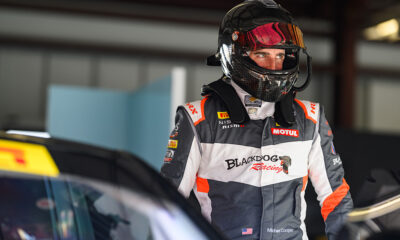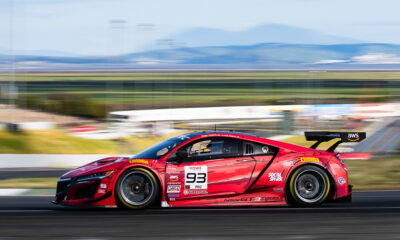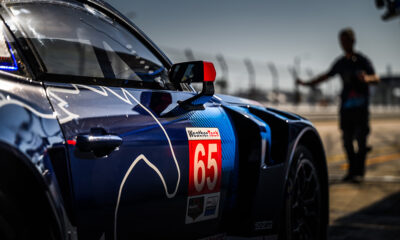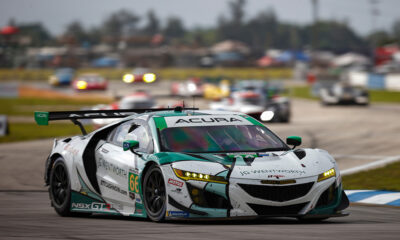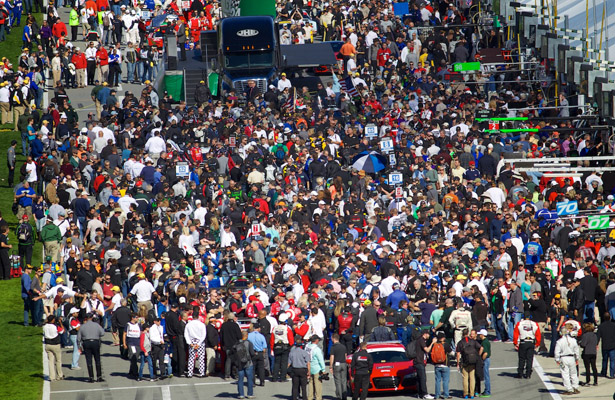
Photo: John Dagys
Less than one year ago, the start of the new sports car racing era in North America was overshadowed in controversy, with officiating errors in the first two races, issues with Balance of Performance and teams’ concerns not initially being heard leading to unrest in the paddock for much of the season.
Yet as the TUDOR United SportsCar Championship returned to Daytona International Speedway to kick off its second season, it quickly became apparent that many of the concerns that had put manufacturers, teams and fans on the edge during a turbulent first year were put to rest.
In fact, the storylines that came out of the 53rd Rolex 24 at Daytona focused on the racing itself, and the competitive battles in nearly all four of the classes that had fans on the edges of their seats and television screens until the closing minutes.
While the 2014 season produced great racing, there was still a plethora of growing pains for the newly merged championship to overcome.
One of the most publicized was in Race Control, with IMSA having made strides throughout last year, culminating with the hiring of new race director Beaux Barfield in September, who brought a new form of order to the paddock.
Having sat through the 45-minute plus driver’s meeting last weekend at Daytona, it was clear that massive strides have been made, not only from an organizational standpoint, but also in the level of communication with teams.
Barfield wasn’t afraid to take questions and suggestions from drivers, but kept everyone on the same page while going through a number of key changes in the off-season overhaul of the IMSA rulebook.
And during the race, there were arguably no questionable officiating calls, and less car-to-car contact than initially expected, marking a rapid departure from last year’s incident-filled series-opener that wasn’t decided until nearly four hours after the checkered flag.
Part of the improved on-track product could be credited to Balance of Performance, particularly with class-to-class racing. Although still not perfect, subtle changes to the Prototype Challenge cars appeared to have helped the class separation and will only get better once the series heads to natural terrain road courses.
The much-talked about DP/P2 BoP, meanwhile, was nearly put to rest in Daytona, with Michael Shank Racing’s Ligier JS P2 Honda topping the time sheets in every on-track session, a complete shock to many after the struggles of the Le Mans-style prototypes on the Daytona high banks one year ago.
While some tweaking remains to be done with the newly formed IMSA Technical Committee, the tireless work from outgoing technical chief Scot Elkins was finally showcased. Elkins, who came under fire throughout 2014, deserves some major credit for achieving what many thought would have been impossible to do.
Changes in IMSA’s communication process has also led to a better paddock atmosphere. The sanctioning body’s initial dictatorship-like approach has been traded for a more democratic environment, while multiple changes in staff throughout 2014 and even into this year has also resulted in improvements.
One key off-season shakeup came with the switch from the NASCAR-affiliated MRN Radio to the newly formed IMSA Radio, headed up by Radio Show Limited’s John Hindhaugh, which received very positive reviews from fans after a successful debut.
While significant strides have been made in key areas, that’s not to say there isn’t any further room for improvement.
The number of full-course cautions remains a concern. Last weekend’s race saw 18 yellows totaling for more than five hours under the safety car, or just less than one-quarter of the entire race. The 2014 race saw similar statistics, but with a lengthy red flag that luckily did not repeat this time around.
The ongoing debate of the safety team, or track services, as IMSA now calls it, continues, particularly following Colin Braun’s crash and subsequent inferno that took nearly one minute for crews to attend to.
And finally, what will the series look like once the season gets into the regular-distance races? While Daytona saw a 53-car grid, less than 40 cars are registered for the entire season, which could make some of the split events a bit sparse.
Despite some questions and uncertainty, the TUDOR Championship appears to have reached a turning point.
And judging by what was considered to have been an extremely successful season-opener, many predicting the series to go through a sophomore slump in 2015 could very well be wrong.



















